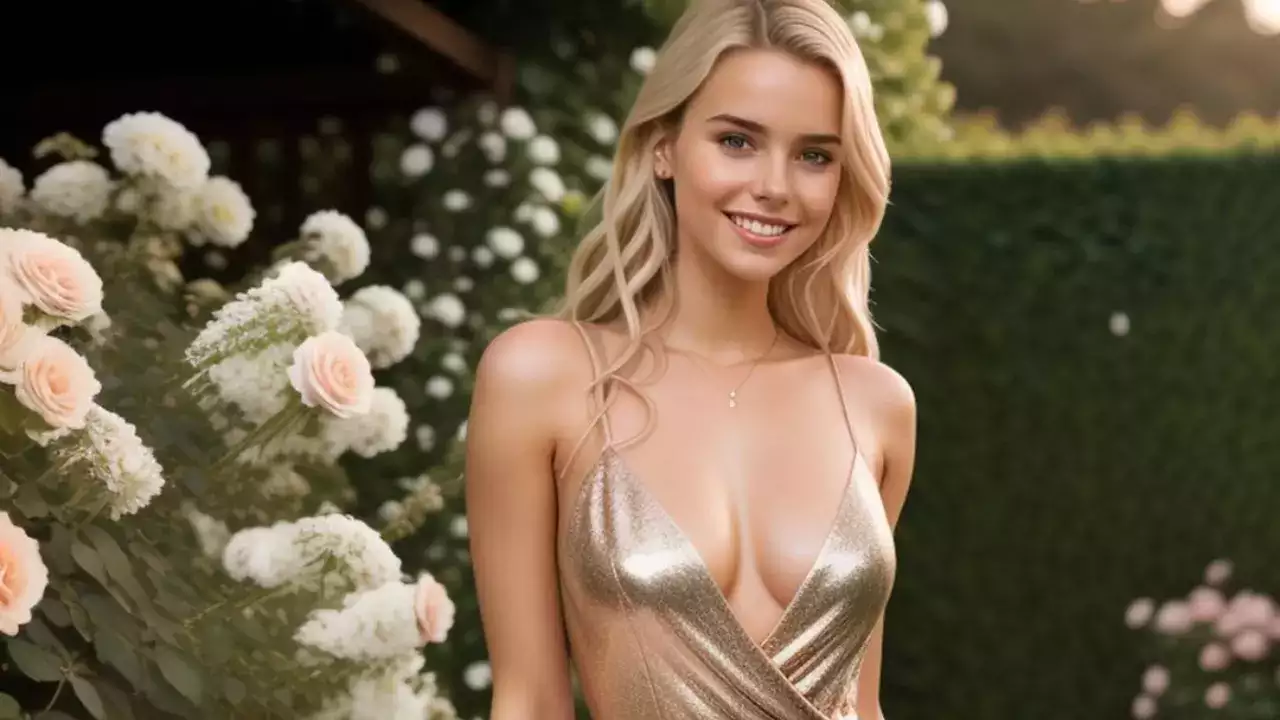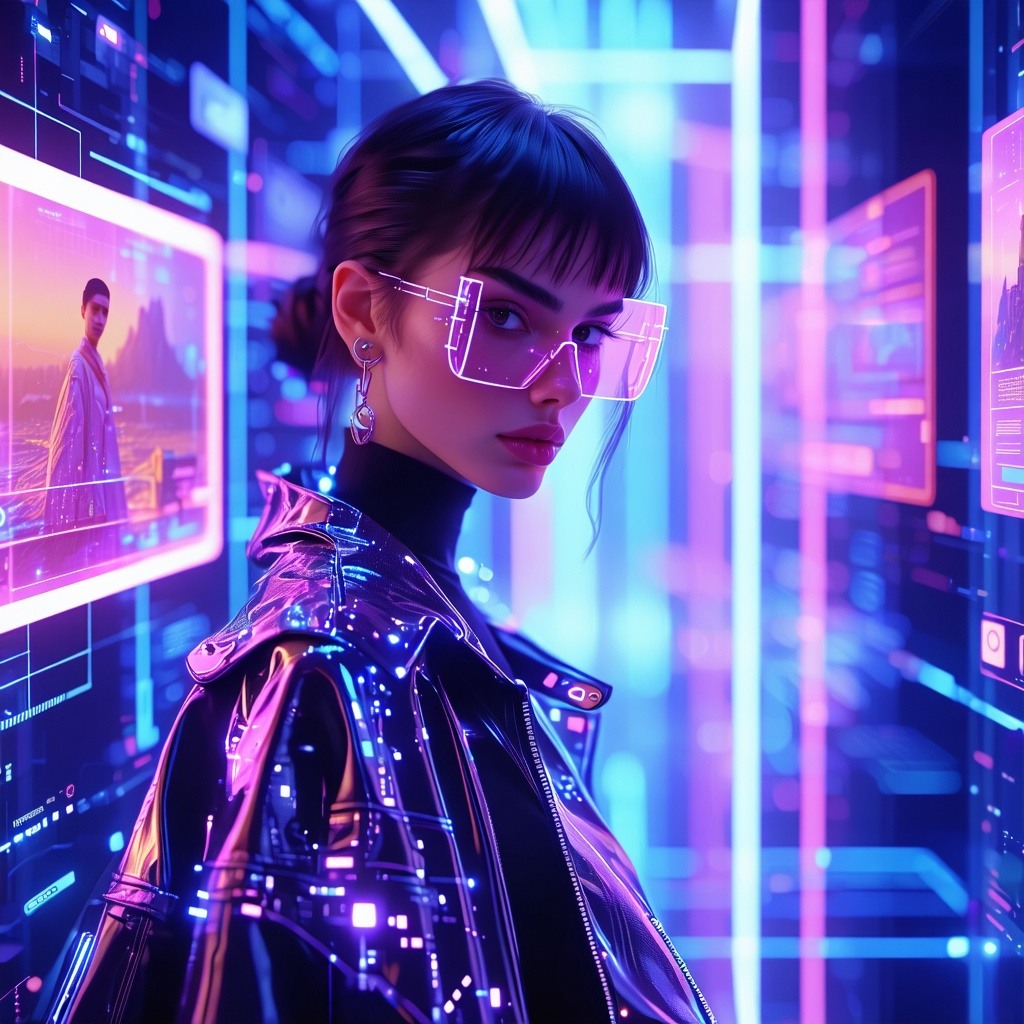7 min read
Milla Sofia AI Influencer Girl: All You Need to Know
Have you ever wondered how virtual influencers are transforming the fashion industry? Milla Sofia is at the forefront of this revolution—a digital...
10 min read
The Amazing Team at Virtual Marketer Max : Feb 4, 2025 7:42:22 AM
Influencer marketing has evolved into a dominant force, with U.S. spending hitting $8.14 billion in 2024 and projected to surpass $24 billion globally by 2025. This rapid growth highlights its deep impact on commerce, culture, and social media.
Staying ahead requires more than trend adoption—it demands foresight. AI-driven personas, niche communities, and data-driven strategies are shaping the future of the industry.
This blog explores 16 Top influencer marketing trends in 2025, equipping your brand with insights to stay ahead and build impactful connections with influencers and audiences.
As influencer marketing continues to grow, AI is becoming a game-changer, helping brands streamline their strategies and drive better results. While many brands are already using AI for content creation, the future of AI in influencer marketing looks even more promising. Virtual influencers are gaining traction, and social media platforms are exploring ways to let influencers create AI-powered versions of themselves to engage and answer audience questions.
For example, Renee, an AI fashion influencer, is redefining digital engagement by providing personalized content and interactions.
In 2025, AI will likely take an even larger role by assisting in analyzing data, building campaigns, and measuring results. AI-powered tools will allow brands and influencers to move beyond intuition and manual research to create highly data-driven strategies that optimize creativity and audience engagement.
Traditionally linked to B2C, influencer marketing is now gaining traction in B2B. In 2025, brands are leveraging influencers on platforms like LinkedIn, which supports short-form videos to foster trust and reach in professional networks.
Given B2B’s lengthy sales cycles, influencers simplify decision-making by offering social proof, demonstrating products, and showcasing real-world impact.
In 2025, LinkedIn introduced short-form videos, allowing up to 60-second clips for sharing insights, advice, and industry trends. Replacing LinkedIn Stories, this feature enhances professional networking with quick, impactful content that fosters authentic connections.
LinkedIn’s video feature presents an unparalleled opportunity for brands to showcase their expertise and humanize their image. Here’s how businesses can use this feature effectively:
While mega-influencers may grab the spotlight, micro-influencers are proving to be a critical asset for brands. With followings ranging between 10,000 and 50,000, these influencers offer a unique opportunity to reach highly engaged, niche audiences in a way that feels personal and genuine.
Rather than relying on one-off campaigns, building long-term partnerships with influencers can lead to more organic promotion and stronger brand trust. Over time, influencers develop a deeper understanding of your brand, allowing them to create content that aligns with your goals and resonates more effectively with their audience.
Faceless content creators thrive in specific niches such as cooking, tech reviews, or DIY projects, where the emphasis is on the process or the subject matter rather than the person behind the camera. This approach doesn’t lack personality—creators often use humor, creativity, and storytelling to connect with audiences and maintain engagement.
TikTok ranks as the fourth most popular social commerce platform, excelling in user engagement and e-commerce growth. Despite potential legislative challenges, its impact remains strong. Live shopping is set to revolutionize e-commerce, potentially reaching 20% of all sales by 2026. TikTok Shop enables brands to leverage real-time interaction and engaging content, driving sales through influencer partnerships.
While celebrity influencers may seem like the go-to choice, nano-influencers—those with fewer than 10,000 followers—are proving to be just as powerful. These influencers have highly engaged, niche audiences, and their content feels more personal and genuine, which makes their endorsements more authentic.
Live streaming is a powerful tool for brands to engage with their audience in real time. With 28.5% of respondents watching live-streamed content at least once a week, this trend continues to grow. Livestreams allow influencers and brands to interact directly with their audience, creating a dynamic and authentic connection.
Consumers today can easily tell when an endorsement doesn’t feel genuine. Inauthentic or forced product promotions can turn off audiences, damage the influencer’s credibility, and hurt the brand’s reputation. To build lasting trust, influencers need to promote products they genuinely believe in, and brands must focus on transparency in their partnerships.
Fraud in influencer marketing is a growing concern. In 2023, 58.5% of mega-influencers engaged in activities to artificially inflate their followings and engagement, making it harder for brands to trust traditional metrics like likes and followers. As a result, many brands are shifting to performance-based agreements that focus on verifiable metrics, such as sales and conversions.
Immersive experiences are becoming the new standard in influencer marketing, with AI influencers playing a pivotal role in this transformation. By integrating artificial intelligence with augmented and virtual reality, brands can create highly engaging, interactive content that resonates deeply with audiences.
Subscription models are becoming increasingly prevalent in influencer marketing, offering brands and creators a sustainable revenue stream and fostering deeper audience engagement. This trend is further enhanced by the integration of AI influencers, who can operate continuously and scale interactions without the limitations of human influencers.

Cross-platform collaborations have become a cornerstone of influencer marketing strategies in 2025, enabling brands to reach diverse audiences and maximize engagement across various social media channels.
AI-powered analytics are revolutionizing influencer marketing by providing brands with precise, data-driven insights that enhance campaign effectiveness and return on investment (ROI).
.gif?width=1398&height=868&name=Animated%20Gif%20(1).gif)
Gen Z is reshaping influencer marketing with a strong focus on transparency, authenticity, and social impact. By 2025, they’ll make up 27% of the global workforce, increasing their economic influence. Highly engaged on TikTok, Instagram, and YouTube, they see influencers as educators, with 49% following creators for learning.
Brands that prioritize authentic storytelling, sustainability, and inclusivity earn their trust. To connect meaningfully, brands must move beyond marketing and show real commitment to the causes Gen Z values, building long-term loyalty and impact.
Influencer marketing is evolving, and AI-driven solutions are becoming essential for brands looking to stay competitive. Virtual Marketer Max offers Renee & Rhea, AI-powered influencers designed to enhance engagement, streamline campaigns, and deliver measurable results. With data-driven insights and scalable solutions, brands can build stronger connections with their audience while maintaining efficiency.
Explore how AI influencers can fit into your strategy. Contact Virtual Marketer Max to learn more.
1. What are the current influencer marketing trends in 2025?
A. In 2025, influencer marketing is seeing a major shift toward authenticity, AI integration, and niche-focused content. Trends include the rise of micro and nano-influencers, virtual influencers powered by AI, live shopping events on platforms like TikTok and Instagram, and long-term brand-influencer partnerships.
2. Why are micro and nano-influencers becoming more popular?
A. Micro (10K–100K followers) and nano-influencers (1K–10K) have higher engagement rates and stronger connections with niche audiences. They’re more cost-effective and provide authentic, trusted recommendations that often outperform celebrity endorsements in terms of ROI.
3. How is AI being used in influencer marketing?
A. AI is being used to generate virtual influencers, personalize content, match brands with the right creators, and optimize campaign performance. It also helps predict audience behavior and streamline influencer discovery based on engagement data.
4. What is a virtual influencer and why are they trending?
A. Virtual influencers are AI-generated characters that act as brand ambassadors. They are always on-brand, never need rest, and eliminate human-related inconsistencies. Their ability to deliver consistent, scalable content is making them popular in fashion, tech, and beauty industries.
5. What is live shopping and how is it changing influencer marketing?
A. Live shopping lets influencers promote products in real-time via livestreams, combining entertainment with instant purchasing. It boosts engagement, creates urgency, and helps consumers make informed buying decisions on the spot.
6. What is the next influencer marketing?
A. The next influencer marketing is driven by AI-powered virtual influencers, community-led creators, and real-time shoppable content. It focuses on authenticity, personalization, and values-based storytelling—where micro-influencers and AI avatars engage niche audiences with data-driven precision. This evolution blends tech with trust, redefining how brands connect with consumers.
7. What are the main challenges in influencer marketing today?
A. Key challenges include identifying the right influencers, ensuring content authenticity, measuring ROI accurately, and keeping up with evolving platform algorithms and audience preferences.
8. How is influencer marketing evolving in the B2B sector?
A. B2B brands are collaborating with industry experts and thought leaders to build credibility. Content focuses more on education and insight-sharing than promotion, making LinkedIn the primary platform for such partnerships.
9. What platforms are most effective for influencer marketing today?
A. TikTok, Instagram, and YouTube remain dominant, especially for consumer-facing brands. LinkedIn is gaining ground for B2B influencer campaigns, while niche platforms like Twitch and Pinterest are emerging based on target demographics.

7 min read
Have you ever wondered how virtual influencers are transforming the fashion industry? Milla Sofia is at the forefront of this revolution—a digital...

3 min read
In the fast-paced world of digital marketing trends, businesses are always looking for unique strategies to expand their reach, captivate audiences,...

10 min read
Introduction: The Digital Transformation of Influencer Marketing “Just when I thought I was out, they pull me back in.” – Michael Corleone, The...